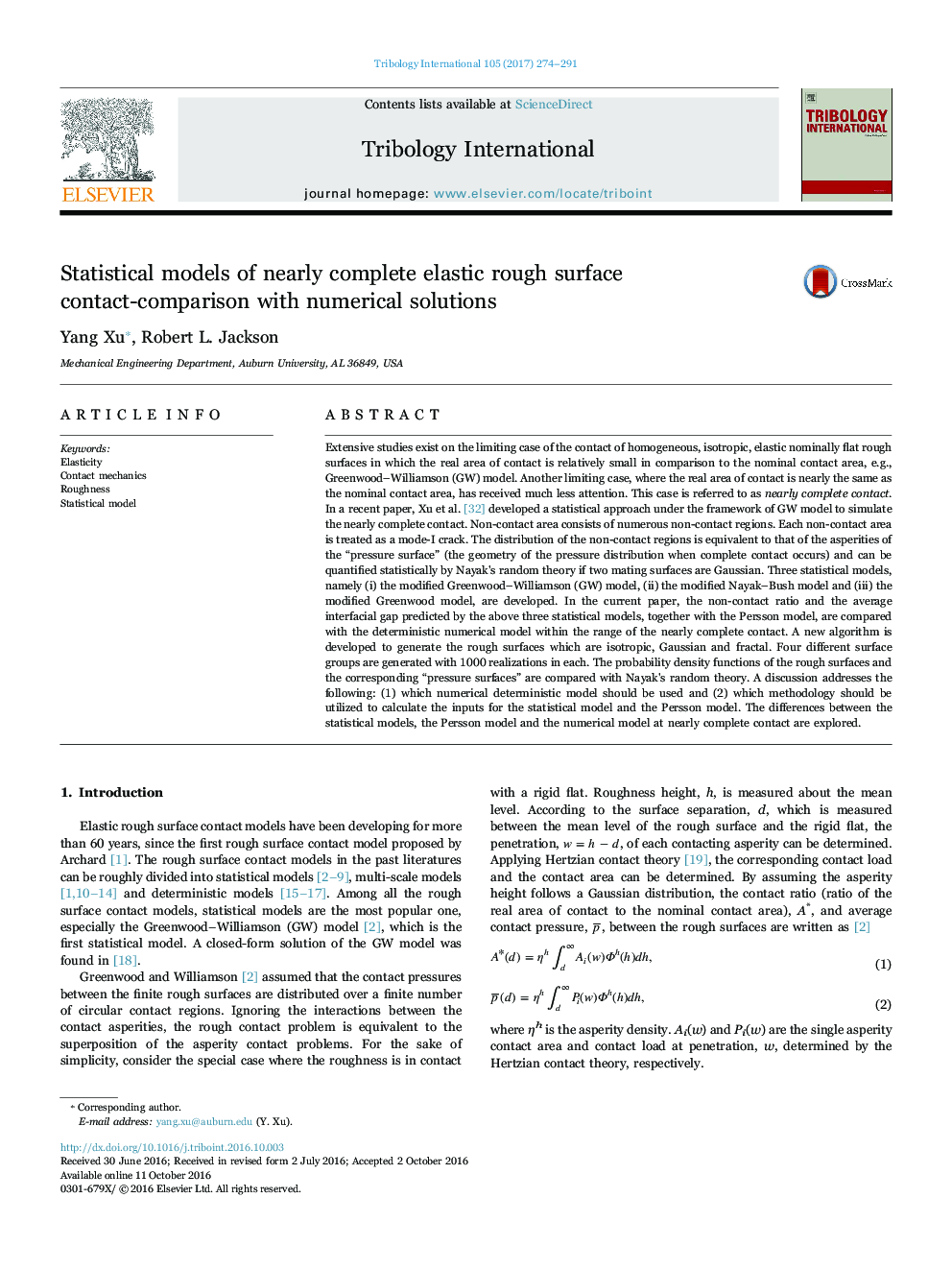| کد مقاله | کد نشریه | سال انتشار | مقاله انگلیسی | نسخه تمام متن |
|---|---|---|---|---|
| 4986267 | 1454801 | 2017 | 18 صفحه PDF | دانلود رایگان |
عنوان انگلیسی مقاله ISI
Statistical models of nearly complete elastic rough surface contact-comparison with numerical solutions
ترجمه فارسی عنوان
مدل های آماری تقریبا کامل تماس سطحی سطح کشش الاستیکی با راه حل های عددی
دانلود مقاله + سفارش ترجمه
دانلود مقاله ISI انگلیسی
رایگان برای ایرانیان
کلمات کلیدی
قابلیت ارتجاعی، مکانیک تماس خشونت، مدل آماری،
موضوعات مرتبط
مهندسی و علوم پایه
مهندسی شیمی
شیمی کلوئیدی و سطحی
چکیده انگلیسی
Extensive studies exist on the limiting case of the contact of homogeneous, isotropic, elastic nominally flat rough surfaces in which the real area of contact is relatively small in comparison to the nominal contact area, e.g., Greenwood-Williamson (GW) model. Another limiting case, where the real area of contact is nearly the same as the nominal contact area, has received much less attention. This case is referred to as nearly complete contact. In a recent paper, Xu et al. [32] developed a statistical approach under the framework of GW model to simulate the nearly complete contact. Non-contact area consists of numerous non-contact regions. Each non-contact area is treated as a mode-I crack. The distribution of the non-contact regions is equivalent to that of the asperities of the “pressure surface” (the geometry of the pressure distribution when complete contact occurs) and can be quantified statistically by Nayak's random theory if two mating surfaces are Gaussian. Three statistical models, namely (i) the modified Greenwood-Williamson (GW) model, (ii) the modified Nayak-Bush model and (iii) the modified Greenwood model, are developed. In the current paper, the non-contact ratio and the average interfacial gap predicted by the above three statistical models, together with the Persson model, are compared with the deterministic numerical model within the range of the nearly complete contact. A new algorithm is developed to generate the rough surfaces which are isotropic, Gaussian and fractal. Four different surface groups are generated with 1000 realizations in each. The probability density functions of the rough surfaces and the corresponding “pressure surfaces” are compared with Nayak's random theory. A discussion addresses the following: (1) which numerical deterministic model should be used and (2) which methodology should be utilized to calculate the inputs for the statistical model and the Persson model. The differences between the statistical models, the Persson model and the numerical model at nearly complete contact are explored.
ناشر
Database: Elsevier - ScienceDirect (ساینس دایرکت)
Journal: Tribology International - Volume 105, January 2017, Pages 274-291
Journal: Tribology International - Volume 105, January 2017, Pages 274-291
نویسندگان
Yang Xu, Robert L. Jackson,
